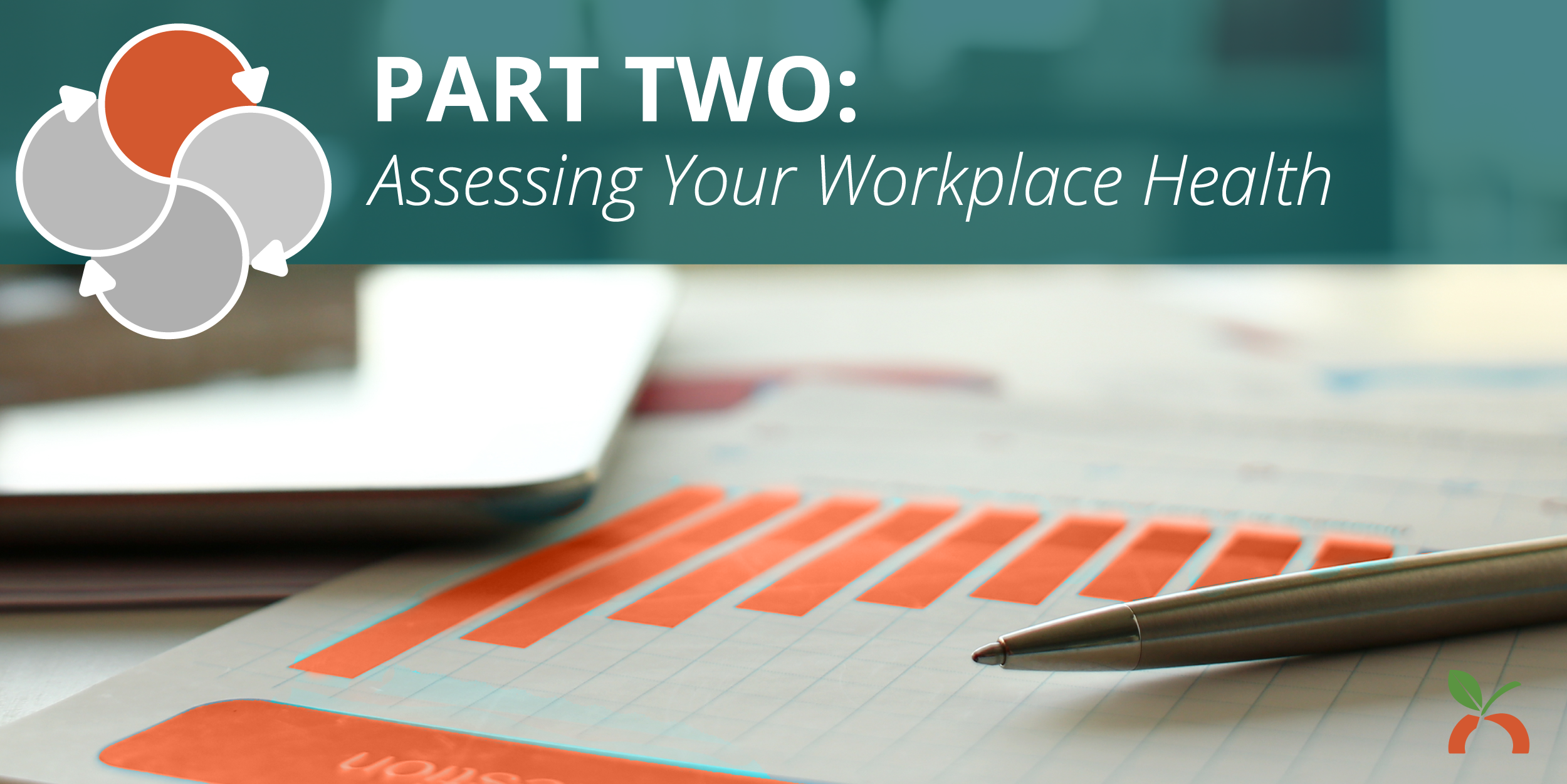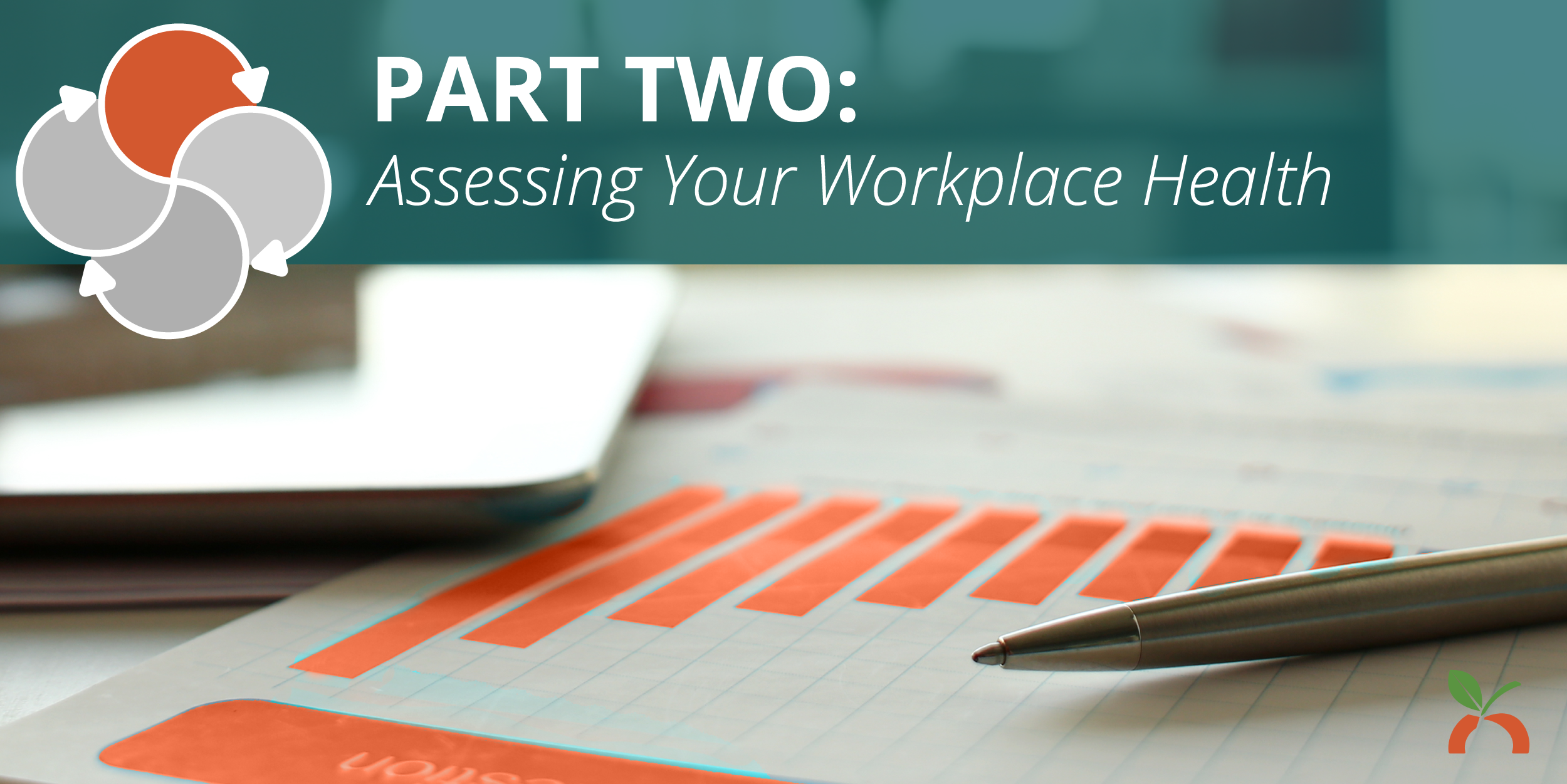This blog post is part two in a series exploring the use of an HRA in developing a health intervention plan using research from Wellsource student intern Kori Pitt. In this example program, Kori outlines an example workplace obesity intervention program. Click here to read part one.
A workplace health assessment collects information that details employee needs to help you specify your target population. It is also essential in establishing organizational health goals, to determine what types of interventions and health goals will suit the worksite.
Learning about the workplace and the employees is an important first step for program development. A workplace health assessment provides key information about what is going on at a workplace and helps make connections between various risk factors that influence employee health. As health is determined by multiple interactions between an individual and his or her environment, assessing employee health through a number of perspectives will help develop a more effective intervention in the long run.
Employee interests as well as current health issues should be considered when developing an intervention. Involving employee input will reinforce to them that the organization is committed to employee health, which will boost the overall success of a workplace intervention. Involving the people affected during program development is a key step to an effective program. Feedback from stakeholders is crucial and getting their perspective on the issue will lead to a more suitable program.
By asking for their help, the program becomes theirs and they take “ownership” of the program. Collecting information about the stakeholders’ preferences and needs will be used during the evaluation phase to determine if the activities in the program are worth continuing and improving.
A Workplace Health Assessment will include the following:
Data from your health risk assessment (HRA): For participants, an HRA offers an opportunity for individuals to assess their health, as well as feedback on unhealthy behaviors and how to live a healthier life going forward. Given the chance to reflect on their own habits, self-awareness comes into play and can act as a great motivator to make positive lifestyle changes. For program administrators, an HRA is great tool to use to measure your target population’s health behaviors, knowledge, and readiness to change. Gathering information on your target population also helps to target your intervention and make it more effective. Taking advantage of your population’s readiness to change is critical as it can serve as a portion of your population’s needs assessment.
Additional assessments, such as: direct observation and site visits; surveys, focus groups and interviews; reviewing existing data from health benefits, healthcare claims, and sick and vacation time. Additional assessment is necessary when developing an intervention specifically for obesity in the workplace, as it provides information on how groups think or feel and why opinions are held, and also offers ways to improve planning and design of interventions. Reviewing existing data helps population health professionals understand the most common health conditions where claims have been made, compare utilization rates, and examine trends in healthcare costs.
It is critical to collect information about the problem to better plan for and implement a successful intervention.
Triple W Challenge example:
Based on , our study found that over 74% of overweight or obese women said they want to change weight, over 50% said they are ready to change nutrition habits, and 26% said ready to change their strategies for coping with stress. This information is helpful for understanding the actionable insights needed to create lasting change through more successful programs.
In addition to collecting HRA data, it would be appropriate to conduct focus groups or surveys to collect information on opinions and behaviors surrounding weight loss, nutrition knowledge, and stress coping strategies.
Why? Surveys can measure employee satisfaction and gauge opinions on workplace issues that may hinder healthy behaviors among the employees. A survey or focus group may reveal barriers that the employees are facing regarding exercise or nutrition. Asking the employees directly about their attitudes toward coping with stress may reveal why they aren’t experiencing stress or what tools they’re lacking to cope with it.
- Focus groups should consist of open-ended questions that allow the participants to describe their thoughts and feelings about healthier behaviors related to obesity. Be sure to find a trained leader and record your sessions. A representative sample of women within your organization should be targeted and recruited. You may want to decide to use incentives to increase participation rates as well.
- Surveys should ask a multitude of questions that ask how or why and include multiple choice and Likert scale answer formats. Use multiple methods of distribution for maximum response rate. This can include publishing the survey on the company intranet, setting up a time for groups of people to take the survey, or conducting phone surveys.
Once the results of the HRA and survey or focus groups are in, the organization has an idea of ways to provide better services or change current policies or regulations that help contribute to a healthier workforce for women.
Applying Readiness to Change Scales to the Intervention
Readiness to change is an important variable to consider for long-term weight loss. The transtheoretical model (TTM) reflects a person’s readiness to change behavior or engagement of a behavior change. TTM explains behavior in five stages: pre-contemplation, contemplation, preparation, action, and maintenance. Individuals who are in pre-contemplation generally report the least benefits of changing behavior compared to those who are in the contemplation or preparation stages.
In the Wellsource dataset included in this study, over half of the women were “ready now” to change their diet and exercise but only a quarter were ready to change their coping with stress strategies. The diet and exercise component of the Triple W Challenge should include components that teach behavior modification as well as support and guide the participants with changes in their behavior. Most of the women were in the pre-contemplation and contemplation stages for coping with stress so the Triple W Challenge should seek to provide health education about stress and resolve doubt and discuss barriers that might be perceived in coping with their stress.
| In next week's installment of this blog series, we will explore the next step in the process: planning the program. |
Meet Kori Pitt, MPH
 Kori Pitt obtained her BS in Public Health at the University of Nevada, Reno in 2013. She recently graduated with her Master’s in Public Health from the University of Arizona. Kori’s program concentrated in health promotion, where she examined health behavior and developed skills in implementing and evaluating health interventions on a population level.
Kori Pitt obtained her BS in Public Health at the University of Nevada, Reno in 2013. She recently graduated with her Master’s in Public Health from the University of Arizona. Kori’s program concentrated in health promotion, where she examined health behavior and developed skills in implementing and evaluating health interventions on a population level.
Kori's internship at Wellsource involved performing research on lifestyle behaviors affecting obesity in working females. She performed statistical analyses on health risk assessment data and created an evidence-based workplace intervention framework for obesity. Kori is passionate about chronic disease education and prevention and bridging the gap between public health research and practice.








